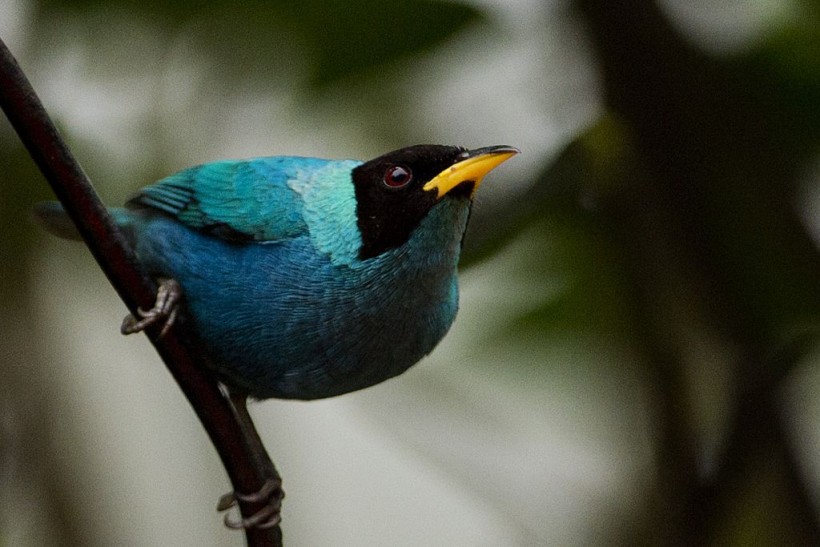Imagine a bird that is half blue, half green. A bird that has two different sets of chromosomes, one from each parent. A bird that is neither male nor female, but both at the same time. Such a bird exists, and it is called a gynandromorph.
Gynandromorphy is a rare condition where an animal develops with both male and female characteristics, usually on opposite sides of the body. It can occur in various species, such as butterflies, lobsters, and chickens. But it is extremely rare in birds, especially in the wild.
That is why the discovery of a gynandromorphic Green Honeycreeper in Colombia has caused a stir among scientists and bird lovers alike.
This remarkable bird, which has been observed for over a year, is the first of its kind to be documented in this species. It is also one of the most striking examples of gynandromorphy ever seen in nature.
In this article, we will explore the mystery behind this dual-feathered wonder, how it came to be, and what it means for the future of its species and its habitat.
We will also learn more about the Green Honeycreeper, a colorful and diverse bird that inhabits the tropical forests of Central and South America.
Unraveling the Mystery of Gynandromorphy
 (Photo : LUIS ROBAYO/AFP via Getty Images)
(Photo : LUIS ROBAYO/AFP via Getty Images)

In the lush greenery of Colombia, a rare bird that exhibits both male and female characteristics has been spotted. This biological marvel, a gynandromorphic Green Honeycreeper, has become the subject of intense study and admiration.
The bird's unique plumage is a living testament to nature's wonders. One side flaunts the deep blue and black hues typical of males; the other side is adorned with vibrant green feathers characteristic of females.
This bilateral gynandromorphy is an extraordinary condition where one animal displays distinct male and female traits.
Also Read: Rare Bird of Prey Goshawk Species Bounce Back Thriving From Supposed Extinction
A Year-long Observation
John Murillo, an amateur photographer, was first to capture this enigmatic creature on camera in late 2019 at a nature reserve in Villamaria in Colombia's heartland. Since then, scientists and bird enthusiasts have observed it meticulously but have yet to capture it.
The Green Honeycreeper's existence challenges traditional biological norms and opens up new avenues for research into avian biology and genetics. Its discovery has prompted discussions about biodiversity, raising questions that scientists are eager to explore.
The details of this remarkable finding have been published in the latest issue of the Journal of Field Ornithology, where the authors describe the bird's behavior, morphology, and possible origin.
They also speculate on the implications of this rare phenomenon for the conservation of the species and its habitat.
The Green Honeycreeper is a small bird that belongs to the tanager family, which comprises over 400 species of colorful and diverse birds.
It is native to the tropical forests of Central and South America, where it feeds on fruits, nectar, and insects. It is usually found in pairs or small groups, and has a distinctive high-pitched call.
The gynandromorphic specimen, however, seems to be a loner. It has not been seen interacting with other birds of its kind, nor has it shown any signs of mating or nesting. It is unclear whether it is sterile or fertile, and whether it has a preference for either sex.
The researchers hope to continue monitoring this rare bird and learn more about its genetics, physiology, and ecology. They also hope to raise awareness about the importance of preserving the rich biodiversity of Colombia, which is home to more than 1,900 bird species, the highest number in the world.
Related article: Sighting of a Rare Bird in Britain may be the "Undeniable Sign" of Climate Change's Severity
© 2024 NatureWorldNews.com All rights reserved. Do not reproduce without permission.





